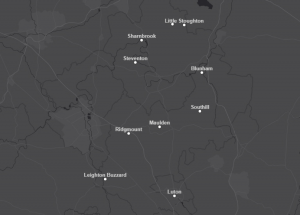Baptist Annual Register Q&A
By Matthew Flinchbaugh
Q: What is the Baptist Annual Register?
A: The Baptist Annual Register is a document that chronicles the state of the Baptist Church and its communities across the world. To be more specific, the Register compiles information about the Baptist Church from 1790-1802. John Rippon, an English minister, was responsible for compiling and publishing the Register. The lengthy full name of the register, The Baptist Annual Register; including sketches of the state of religion among different denominations of good men at home and abroad, clears up the intent of Rippon when publishing the document. It was meant to provide insight into the workings and culture of the various Baptist sects and specific church communities across the world. At the same time, Rippon’s title genially suggests a common ground is shared the by the far flung “good men” of the Baptist church. The Register is a conglomeration of a wide array of different document types. These document types include meeting minutes from local assemblies, accounts of ordinations and other ceremonies, obituaries, letters, sermons, and various lists. Possibility most notable are the numerous lists. These lists provide historical data in a clear format. The listings about Baptist church communities around the world were most salient for my group’s research. These listings were an invaluable part of the mapping process that is described later in this blog post.
Q: What kind of research have you done?
A: The bulk of the work our group did focused on identifying church communities and their respective preachers. When possible, we also identified specific events that related to each community and/or preacher. For example, a handful of the preachers we researched had published religious writings. We collected as much data as we could find about church by combing through the register, recording it in a carefully formatted spreadsheet. Using church communities as our basis, we assigned each church different attributes based on our reading of the register. These attributes included geographic data, as well as demographic data about the churches’ preachers.
Q: What kinds of stories and arguments can be constructed through the document?
A: While this document lends itself to a multitude of conclusions and arguments, my understanding of this document has centered upon one conclusion. While this document covers a huge community, Baptists’ everyday lives were shaped most extensively by the church communities and individuals in close geographic proximity. While communities of completely different backgrounds existed under the umbrella of Baptism, they were simultaneously isolated from differing churches. The progressive nature of Black Baptist churches in North America, for instance, never directly impacted churches throughout the United Kingdom. On the other hand, local Baptist churches often meaningfully impacted each other day to day.
Stories of The Baptist Annual Registry: Bedfordshire County 1794
Click on picture to open map viewer
The map I’ve created, which is viewed by clicking the image above, shows the churches of Bedfordshire County (present day Bedford County) that were present in 1794, according to the Register. I chose to highlight this county because it displays the interconnection of local Baptist churches so well. Half of the churches’ preachers can be placed at the same event, the ordination of Reverend Thomas Mabbott as pastor of the Biggleswade church. Mabbott’s ordination occurred November 4, 1794 and was attended by group of Baptist ministers including Bedfordshire’s Martin Mayle, William Dickens, John Emery, Thomas Pilly and John Gamby. Each minister participated in the ceremony at different points; Mayle opened with prayer, Dickens introduced the service, Emery read a passage from the Gospel of Luke, Pilly addressed Mabbott from scripture, and Gamby lead a closing prayer. While the Register has a wealth of cold, hard data, it also paints pictures of close-knit, religious communities. The fact that half of the established preachers of the county showed up to and played vital roles in the ordination of a new preacher speaks volumes. Mabbott’s ordination is only one example of local Baptist unity that can be found in the Register, but there are many more.
Further Reading
Kidd, Thomas S. The Great Awakening: the Roots of Evangelical Christianity in Colonial America. Yale University Press, 2009.
Rippon, John. The Baptist Annual Register; Including Sketches of the State of Religion among Different Denominations of Good Men at Home and Abroad. Hathitrust, catalog.hathitrust.org/Record/000541650/Home.

